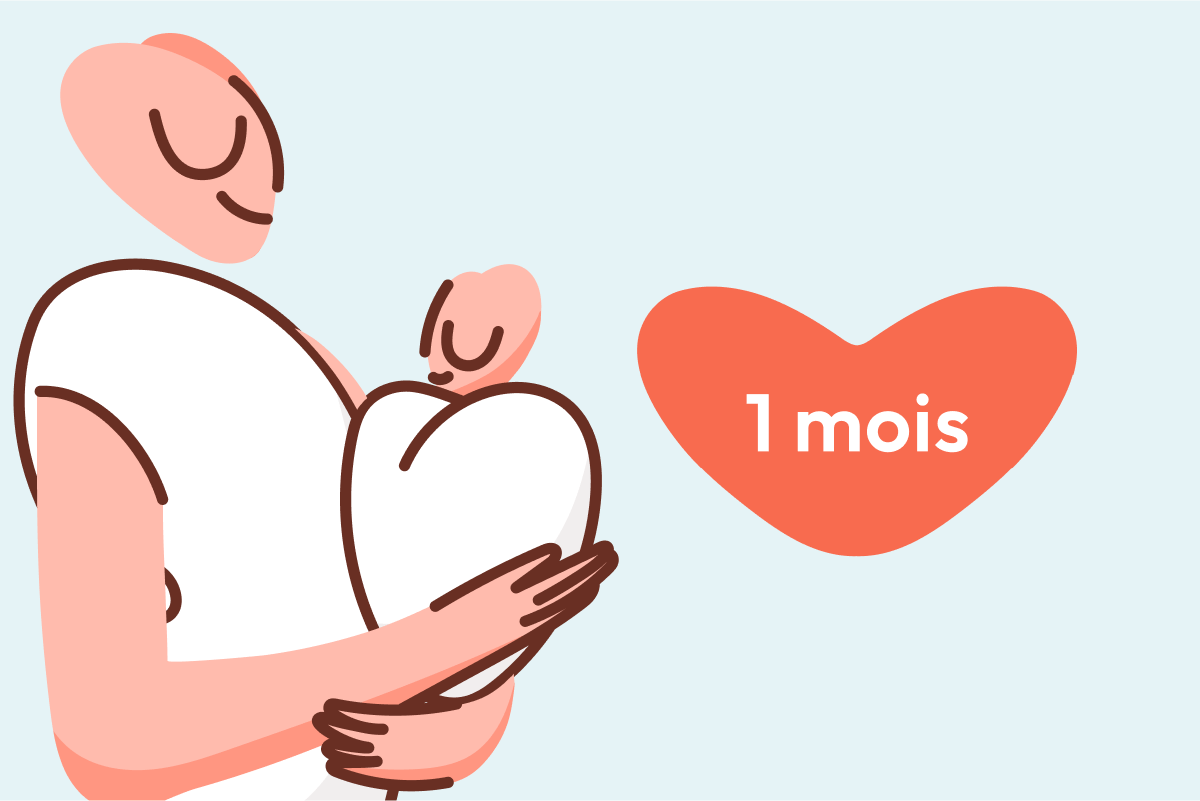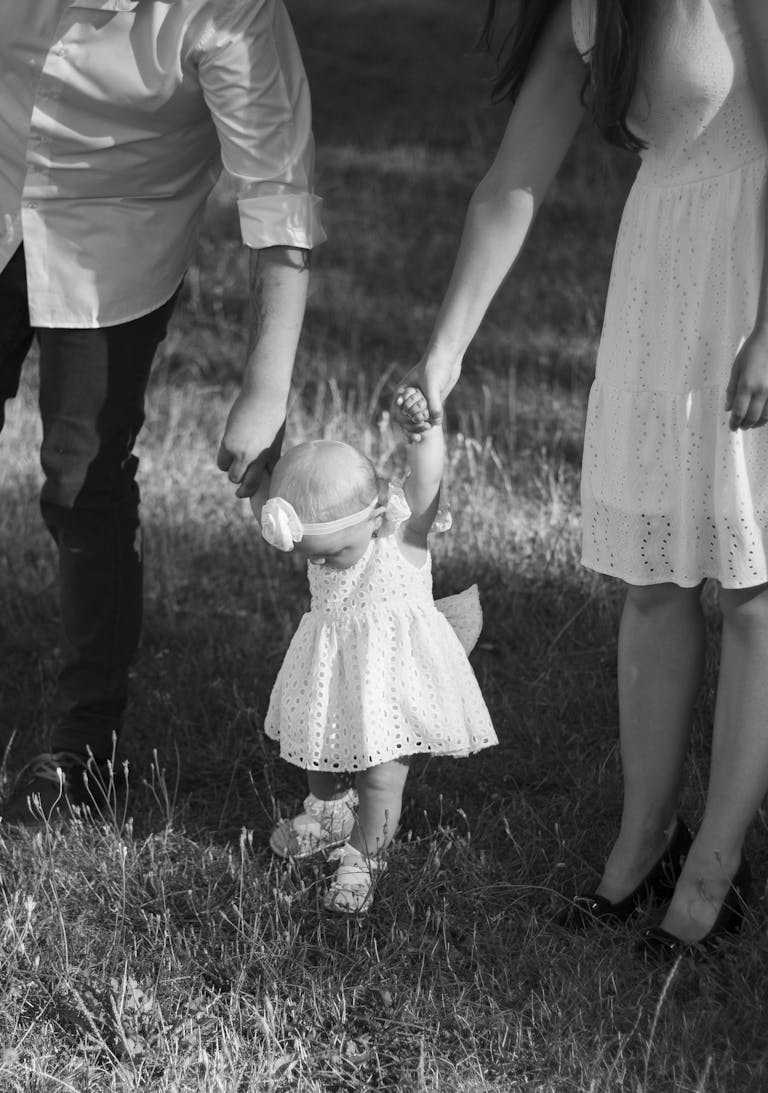When caring for a 1 month old baby, it’s astonishing how many questions can crowd in—Are they growing fast enough? Why do they cry so much? Should sleep be happening in two-hour stretches or six? If you’ve found yourself gazing at your newborn, scrutinizing every tiny twitch or sound, you’re absolutely not alone in this experience. Every new parent finds themselves questioning, observing, and sometimes doubting their own instincts—should this be happening? Is my baby okay? The world of a 1 month old baby is a swirl of physical changes, feedings that seem to blend into each other, and stretches of sleep that are peppered with unpredictable wakefulness. Here, we dive into the practical, the scientific, and the tangible realities of these first weeks—addressing the questions that tend to keep new parents awake after the third 2 a.m. feeding.
Understanding Growth and Development in a 1 Month Old Baby
From the very first days, a 1 month old baby begins an extraordinary transformation. Growth isn’t just visible through weight gain or chubby thighs—watch for that steadily increasing head circumference, a marker of healthy brain development. On average, infants gain about 1.5–2 pounds and grow roughly 1–1.5 inches in length over these first four weeks. As you carefully support their head, you might notice expanding facial expressions—reflex smiles flickering during sleep (the kind that make you wonder, is that real joy or just gas?).
Muscle tone and movement rely on primitive reflexes: the rooting reflex (searching for food), the Moro reflex (startle), the grasp reflex (clutching your finger), and the sucking reflex. Each shows that the nervous system is laying its foundations. Supervised tummy time, even if just for a few minutes a day, helps strengthen neck muscles as your 1 month old baby tentatively lifts their head.
Hand exploration is still mostly reflexive—fists dominate, interrupted by occasional finger stretches. This is the earliest precursor of future fine motor skills. Don’t worry if your 1 month old baby occasionally clings to your finger; that grip is an involuntary marvel, not a conscious act.
On the sensory front, vision lags behind hearing. Babies are drawn to high contrast images—bold patterns and black-and-white objects. Surprisingly, even a simple mobile or your distinct facial features can captivate a 1 month old baby. Their hearing is already fine-tuned: sudden noises provoke a startle, while familiar voices (especially yours) often prompt tiny coos.
Daily Rhythm: Sleep, Feeding, and Awake Periods
What does a typical 24 hours look like for a 1 month old baby? In short: a symphony of sleep, brief awakenings, and relentless hunger. Expect your baby to sleep roughly 14–17 hours a day, doled out in short, uneven stretches—circadian rhythms aren’t established yet.
Awake windows are fleeting, often lasting only 30–60 minutes per cycle. Here’s the paradox: these short moments are the ones in which learning, bonding, and early play happen. Skin-to-skin contact, gentle massages, and unhurried eye contact are all your child needs for healthy sensory stimulation at this stage.
Feeding is an anchor point. For breastfed infants, expect 8–12 feeds over 24 hours—each session guided by your baby’s hunger cues, which may include rooting, sucking on hands, or fussing. Formula-fed babies typically drink every 3–4 hours, taking about 4–5 ounces per feed. Let your 1 month old baby lead; assessing diaper output (at least 4–6 wet diapers daily) reassures that intake is where it should be.
Stimulation and Early Play for a 1 Month Old Baby
Does a 1 month old baby need sophisticated toys? Not at all. The most powerful “toys” are high-contrast objects—think patterned cards, simple mobiles, or even a parent’s smiling face. Soft rattles and plush toys designed for newborn grasp can add gentle tactile stimulation.
Supervised tummy time remains essential; even brief daily sessions help develop core muscles and prevent flat spots on the head (positional plagiocephaly). Alternate play with restful cuddling to avoid sensory overload—these infants tire easily, and their cues (turning away, fussing, arching their back) are subtle but important.
While actual social smiling is still rare at this age, some 1 month old babies may display reflexive grins. When your baby smiles—real or not—smile back. This simple interaction lays the groundwork for emotional bonds and social cognition.
Hygiene and Daily Care: The Essentials
Diapering
At this stage, expect to change diapers every 2–3 hours or whenever soiled, using warm water or alcohol-free wipes. Applying a thin layer of protective cream helps minimize diaper rash—a concern heightened in babies with sensitive skin or frequent stools.
Bathing
Baths don’t need to be daily. Two or three times a week suffices, using lukewarm water (about 98.6°F) and a fragrance-free cleanser to maintain the skin barrier. For many, bath time is a calming prelude to sleep—a sensory buffer between busy days and restful nights.
Umbilical Cord and Nail Care
If the umbilical cord stump remains, keep the area dry and allow it to fall off naturally. Only clean with water or a mild antiseptic when recommended by healthcare professionals. Fingernails, astonishingly fast-growing in a 1 month old baby, can scratch delicate skin. Trim with rounded scissors or file gently, preferably post-bath when nails are softer.
Skin
Dry patches, baby acne, and cradle cap (scaly areas on the scalp) are common at this age and generally benign. Moisturizing with a hypoallergenic baby lotion after bathing soothes dryness. For cradle cap, massage in a few drops of oil before bathing and gently loosen flakes with a soft brush. Baby acne, if it appears, is almost always self-limiting—avoid harsh soaps or creams.
Sleep: Patterns, Challenges, and Safe Practices
Typical Sleep Architecture
A 1 month old baby has unpredictable sleep cycles. Night and day still mean little, and brief naps can happen at any time. Don’t fret over irregular bedtime routines—instead, establish simple rituals: dim lights, gentle rocking, or a quiet lullaby signals sleep, even if outcomes remain inconsistent.
Crying during sleep is common. Sometimes, a baby’s cry may not herald distress but simply reflect immature transitions between sleep phases. Wait and observe—if your child quickly resettles, intervention may be unnecessary. Always check for hunger, a wet diaper, or discomfort if crying persists.
Safe Sleep
Follow the “Back to Sleep” recommendation: always place a 1 month old baby on their back in a safety-tested crib with a firm mattress, no soft bedding, pillows, or toys present. Swaddling can provide comfort, but ensure the hips can move and arms are not tightly restricted. The safest sleep location is in the same room as parents but not in the same bed. Maintain a smoke-free environment and keep the room temperature between 68–72°F, reducing risks and supporting restful sleep.
Feeding, Nutrition, and Supplements
A 1 month old baby’s digestive system is perfectly adapted to either exclusive breast milk or infant formula. Breastfeeding frequency (8–12 times daily) and formula feeding (every 3–4 hours) are both guided by baby’s cues—not the clock. The content of breast milk changes dynamically, matching your baby’s evolving needs—while formulas are fortified to provide the required vitamins and minerals.
Monitoring weight gain, stool frequency, and hydration (diaper output) provides reassurance. For breastfed babies, vitamin D and vitamin K supplementation is recommended, as breast milk is low in these nutrients. Although many formulas already contain these vitamins, additional vitamin D is commonly advised.
Bottle hygiene matters—thoroughly clean bottles using hot water and a bottle brush or a dishwasher at 140°F; avoid microwave heating to prevent uneven warmth or nutritional loss.
Bowel Movements and What to Expect
Expect a dramatic evolution in bowel patterns. Initial meconium stools soon give way to yellow, seedy stools in breastfed babies and firmer, brown stools in those who are formula-fed. Beyond six weeks, stool frequency varies dramatically—from several times a day to once a week. Watch for warning signs: red, black, white, or gray stools, or a drastic change in consistency. Very loose, watery stools may suggest infection; overly firm stools could indicate dehydration.
Recognizing and Managing Health Concerns
The world of a 1 month old baby is rarely trouble-free. Colic, frequent spit-ups, transient skin conditions (like cradle cap or baby acne), and mild eczema are frequent encounters. Colic remains poorly understood—symptoms include inconsolable crying, often in the evenings. Gentle rocking, white noise, swaddling, and soft massages sometimes provide relief, but often, time is the only long-term solution.
Seek medical advice urgently for:
- Fever (rectal temperature 100.4°F/38°C or higher)
- Fewer than 4 wet diapers in 24 hours
- Lethargy, poor feeding, persistent vomiting
- Convulsions or abnormal movements
- High-pitched or unusual crying
Routine well-child checkups are essential. These appointments track growth, address vaccination schedules, and support developmental monitoring.
Comfort, Safety, and Early Stimulation
A safe space for a 1 month old baby means a firm crib, a clear sleep area, and a rear-facing car seat for any journey. Avoid overheating—dress baby in one more layer than you’d wear, and check their neck or back for sweat. Regular skin-to-skin time and open floor play (supervised, of course) are impactful—stimulating sight (with high-contrast toys), touch, and hearing. Limit visual and auditory stimulation if your baby shows signs of overload, and prioritize gentle, calm rituals during transitions.
Parental Well-Being and Emotional Support
Being responsible for a 1 month old baby can feel both exhilarating and overwhelming. Sleep deprivation, shifting moods, and a lingering sense of uncertainty are perfectly normal. If sadness, anxiety, or emotional numbness worsen or persist beyond the initial weeks, this may be a signal of postpartum depression—a condition with effective treatments and no place for shame. Shared care with a partner, short naps (whenever possible), and simple kindness toward oneself facilitate a smoother adjustment. Building a network—family, friends, and other parents—provides both practical help and emotional normalization. Remember: every moment with your baby, however challenging, is laying the groundwork for future connection.
Key Takeaways
- Every 1 month old baby grows and develops differently—compare less, observe more, and let cues guide you.
- Prioritize demand feeding, safe sleep practices, and daily hygiene. Regular diaper checks and skin care routines are small acts with significant impacts.
- Simple, intentional interactions—skin-to-skin, face-to-face play, gentle words—are powerful drivers of early brain and emotional development.
- Promptly seek medical evaluation for fever (over 100.4°F/38°C), dehydration, persistent vomiting, or unexplained changes in mood or movement.
- Parents benefit from both practical and emotional support—share tasks, build routines, and consult professionals as needed.
- For tailored advice, activities, and free health questionnaires for children, try the Heloa app—your ally for everyday parenting.
The earliest days are both fleeting and formative—take each as it comes, knowing that your 1 month old baby is learning, growing, and connecting with you in a thousand tiny ways.
Questions Parents Ask
How can I help my 1 month old develop good vision?
A newborn’s vision is still developing during the first month. You can gently support their visual progress by offering high-contrast patterns—such as black and white images—or simply holding your baby close during cuddles. Softly moving your face from side to side or showing simple shapes can encourage your baby to track with their eyes. Don’t worry if focus seems brief or inconsistent; this is entirely normal at this young age. Rassurez-vous, each small interaction, even a loving gaze or smile, plays a part in stimulating your baby’s growing senses.
What should I do if my 1 month old has trouble latching during breastfeeding?
Feeding challenges are more common than you might think and can feel discouraging in the moment, but il convient de rappeler que chaque dyad parent-enfant évolue à son propre rythme. Try to find a calm, comfortable position for both you and your baby; skin-to-skin contact can support better latching. Watching for feeding cues—like rooting or smacking sounds—can also help you get started before your baby gets too upset. If you continue to face difficulties or feel discomfort, you may wish to consult a lactation consultant or healthcare provider. There are always supportive solutions, and each small adjustment contributes to your shared journey.
Is it normal for my 1 month old baby to start cooing or making sounds?
Yes, cooing and making gentle sounds often begin in these early weeks. Sometimes, these noises are soft sighs or content murmurs. It’s your baby’s first way of communicating and discovering their own voice! Responding gently, smiling, or talking back to your baby encourages this beautiful exchange. If your baby is quieter or less vocal, pas d’inquiétude; every child develops at their own unique pace. Cherish these moments and feel free to share your own singsong words—they truly make a difference.

Further reading:









